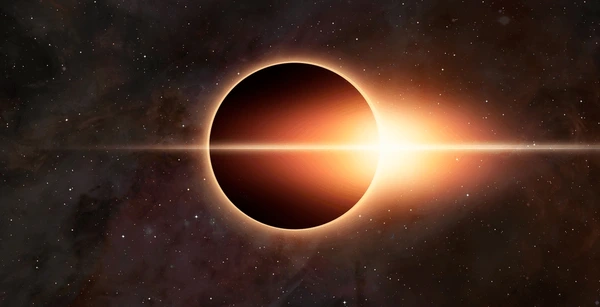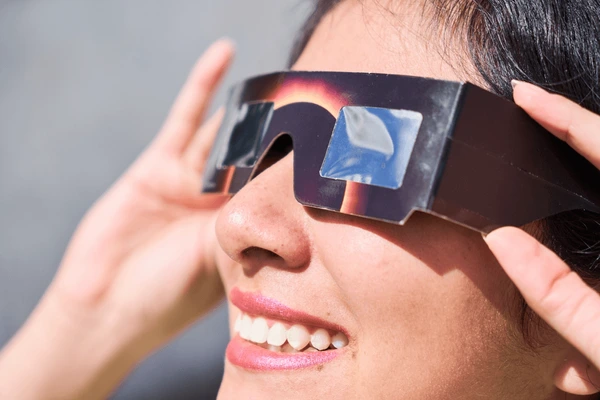Introduction: A Cosmic Spectacle Worth Witnessing
Few celestial events capture the awe and imagination of people across the globe quite like a solar eclipse. This rare phenomenon, where the moon passes between the Earth and the sun, casts a shadow on our planet, briefly turning day into night. For many, seeing a solar eclipse is a once-in-a-lifetime experience, and for some, it’s a reason to travel amazing distances to witness the event firsthand. But what exactly does a solar eclipse look like, and why does it inspire such fascination? Understanding the visual dynamics of this astronomical event provides a window into the powerful relationship between the Earth, moon, and sun.
In this article, we will explore the visual aspects of a solar eclipse, break down the different stages, and highlight why this event is both scientifically significant and a breathtaking natural occurrence. From the moment the moon begins to cover the sun to the eerie darkness of totality, a solar eclipse offers a visual spectacle unlike anything else in the natural world.
The Anatomy of a Solar Eclipse
To understand what a solar eclipse looks like, we must first comprehend the key phases that make up this celestial event. The process begins slowly and culminates in an awe-inspiring moment of totality (in a total solar eclipse). Below, we’ll outline each stage in detail:

1. The First Contact: Partial Eclipse Begins
As the moon begins its journey across the sun’s face, the first noticeable visual cue is a small, dark curve creeping into the sun’s bright disk. This moment is known as the “first contact.” First, it may seem like a small bite out of the sun, but this is the first step. During this stage, the sky remains largely unaffected, but viewers with solar eclipse glasses or viewing devices will see the moon moving over the sun.
During the partial phase of the eclipse, the light of the sun gradually dims, creating a peculiar atmosphere. Even though the eclipse covers part of the sun, it’s still dangerous to look directly at it without protection, as the sun’s rays remain potent enough to cause eye damage.
2. The Approach to Totality: Changes in the Sky
As the moon covers more of the sun, the light begins to change in more noticeable ways. Shadows become sharper, and the ambient light takes on an eerie, dim quality. This effect is known as the “eclipse light.” The temperature may start to drop, and animals may begin behaving as if it’s dusk, with birds quieting down and nocturnal creatures stirring.
Observers will notice a deepening contrast in the landscape. Colors become more muted, and the sun’s light takes on an almost silvery appearance. Viewing the world through a soft filter creates an otherworldly atmosphere. At this point, excitement mounts as totality approaches.
3. Bailey’s beads exhibit the Diamond Ring Effect.
Just before the moment of total eclipse, two unique visual phenomena occur Bailey’s beads and the Diamond Ring Effect. These fleeting moments offer some of the most beautiful imagery associated with solar eclipses.
- Bailey’s Beads: As the moon’s uneven surface (with its mountains and valleys) covers the sun, small beads of sunlight shine through in certain spots, creating a shimmering effect. Just moments before the sun completely disappears, this spectacle unfolds, heightening the anticipation of totality.
- Diamond Ring Effect: After the last of Bailey’s beads disappears, a single point of bright sunlight remains visible, creating the illusion of a diamond ring in the sky. This bright flash is one of the last things seen before total darkness descends. For many, the diamond ring is a moment of sheer beauty, a dazzling flash of light before the moon completely swallows the sun.
4. Totality: The Solar Eclipse’s Peak
When the moon fully covers the sun, the moment of totality arrives. During this phase, the sky’s transformation is nothing short of breathtaking. Day turns into night, and an eerie silence falls over the landscape. The most striking feature during totality is the appearance of the sun’s corona, the outermost part of its atmosphere.
- The Corona: The sun’s corona, a glowing, white halo surrounding the moon, remains visible despite the sun’s complete blockage. Usually hidden by the sun’s brightness, this ethereal light becomes the focal point during totality.The corona can extend millions of kilometers into space, creating a spectacular visual effect.
- The Twilight Effect: During totality, the horizon glows with a soft twilight effect in every direction, creating the illusion of sunset or sunrise at 360 degrees around the observer. This unusual phenomenon further enhances the otherworldly atmosphere.
During this brief period of totality, the world plunges into darkness, and the temperature drops further. This phase typically lasts for a few minutes, depending on the location, before the sun begins to re-emerge. For many viewers, the experience is deeply emotional, evoking a sense of wonder and connection to the cosmos.
Different Types of Solar Eclipses
While total solar eclipses tend to be the most dramatic, other types of eclipses also occur, each offering its visual splendor.
Partial solar eclipse
Only a bit of the sun is obscured by the moon during a partial solar eclipse. While the sun never completely disappears, the crescent shape created by the moon’s shadow is still a striking sight. Observers will notice similar atmospheric changes, albeit less dramatic than during a total eclipse.
Annular Solar Eclipse
An annular eclipse results from the moon’s too great distance from the Earth to fully shadow the sun. As a result, a bright ring of sunlight, known as the “ring of fire,” remains visible around the edges of the moon. This effect is visually stunning, as the sun’s light forms a perfect halo. Although the sky dims during an annular eclipse, it doesn’t go as fully dark as it would in a total eclipse.
Hybrid Solar Eclipse
A hybrid solar eclipse is a rare type of eclipse that shifts between a total and annular eclipse at different points along its path. This results in different visual experiences depending on the location of the observer. In some areas, the eclipse may appear as total, while in others, it will appear as annular.
The Significance of Solar Eclipses and Real-World Applications
Solar eclipses are not only visually striking but also hold significant scientific value. Historically, these events have been critical in advancing our understanding of the sun and the solar system. The study of solar eclipses has led to groundbreaking discoveries, including insights into the sun’s corona, the behavior of solar winds, and the gravitational influence of celestial bodies.
Scientific and astronomical advancements
One of the most famous scientific applications of a solar eclipse occurred in 1919. British astronomer Sir Arthur Eddington used a total eclipse to confirm Albert Einstein’s theory of general relativity. Eddington demonstrated that the sun’s gravity could bend light during the eclipse, a phenomenon Einstein had predicted.
Public Engagement and Citizen Science
Solar eclipses provide an excellent opportunity for public engagement with science. Many amateur astronomers and citizen scientists participate in eclipse observation, contributing valuable data to professional researchers. Eclipses inspire people to learn more about astronomy and can be a gateway to a lifelong interest in space exploration.
Cultural and historical significance
People have viewed solar eclipses as both positive and bad omens throughout history. Ancient civilizations often interpreted eclipses as messages from the gods or signs of impending disaster. Some cultures perceived solar eclipses as contests between celestial deities. While we now understand the scientific basis of eclipses, the sense of awe and mystery surrounding these events remains intact.
How to Safely Observe a Solar Eclipse
Given the brilliance of the sun, observing a solar eclipse requires proper safety measures to prevent eye damage. During most phases of the eclipse, especially the partial eclipse, it’s essential to use protective eyewear designed for solar viewing. Regular sunglasses—no matter how dark—do not provide enough protection.

Solar eclipse glasses
Solar eclipse glasses are inexpensive, widely available, and specifically designed to block harmful rays from the sun. Wear these whenever the sun is visible during an eclipse, except during totality when it’s safe to gaze directly at the eclipsed sun.
Pinhole projectors and viewing devices
An more secure method to see the eclipse is via a pinhole projector. This simple device allows you to watch the eclipse indirectly by projecting the sun’s image onto a surface. It’s an excellent method for those who don’t have access to solar eclipse glasses or who prefer not to look directly at the sun.
Tips for Safe Observation
- Always supervise children during eclipse viewing.
- Never look directly at the sun without protection.
- Be aware of your surroundings, especially if you are in a crowd of observers, to avoid accidents.
Final Remarks: The Lasting Impact of a Solar Eclipse
A solar eclipse is more than just a brief astronomical event it’s a profound experience that connects us to the cosmos in a tangible way. The visual spectacle, the drop in temperature, the change in light, and the fleeting moment of totality all combine to create a memory that can last a lifetime. Whether you’re witnessing a partial, annular, or total eclipse, the sight of the moon crossing the sun is a powerful reminder of our place in the universe.


